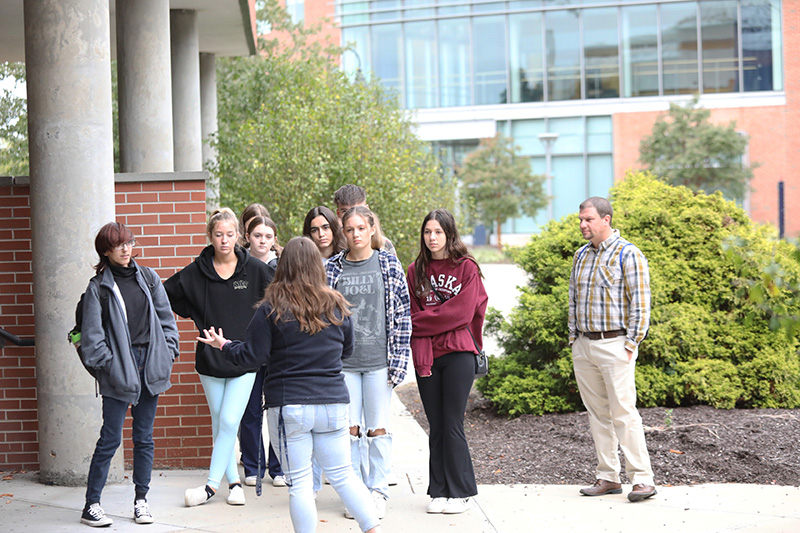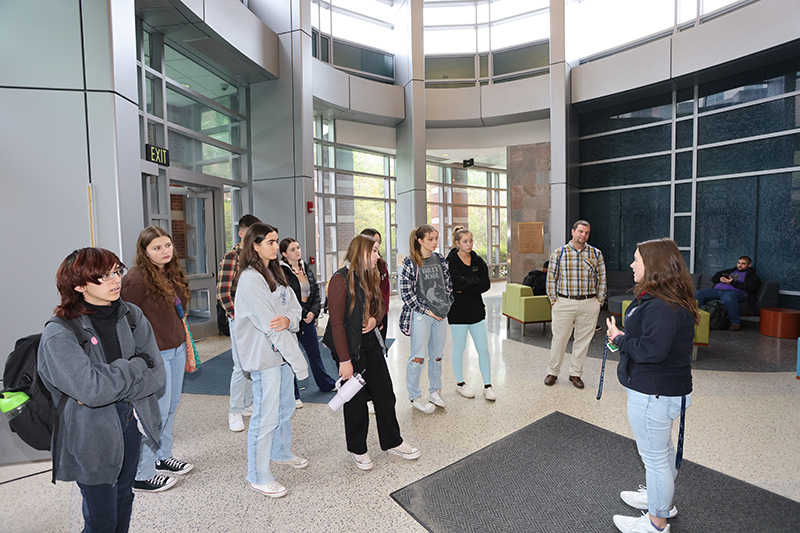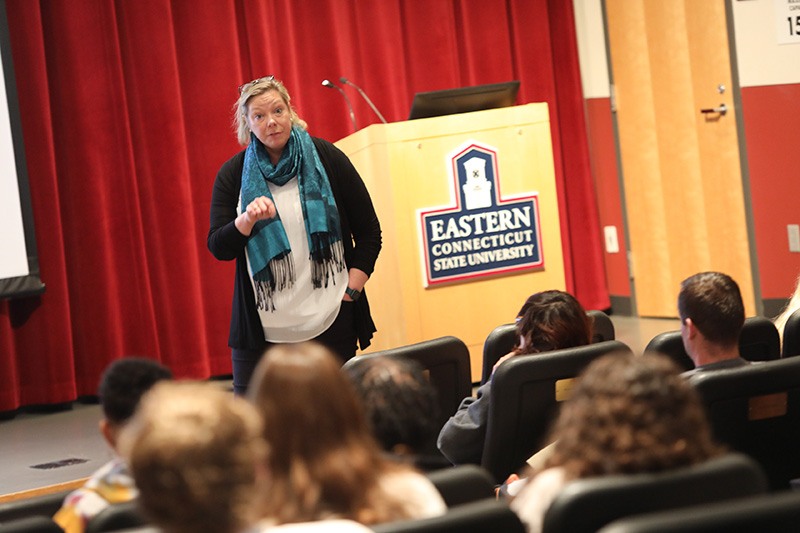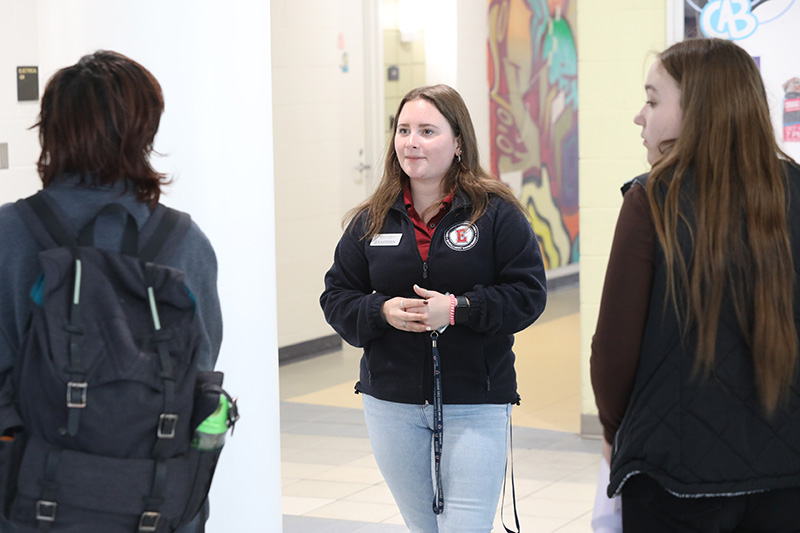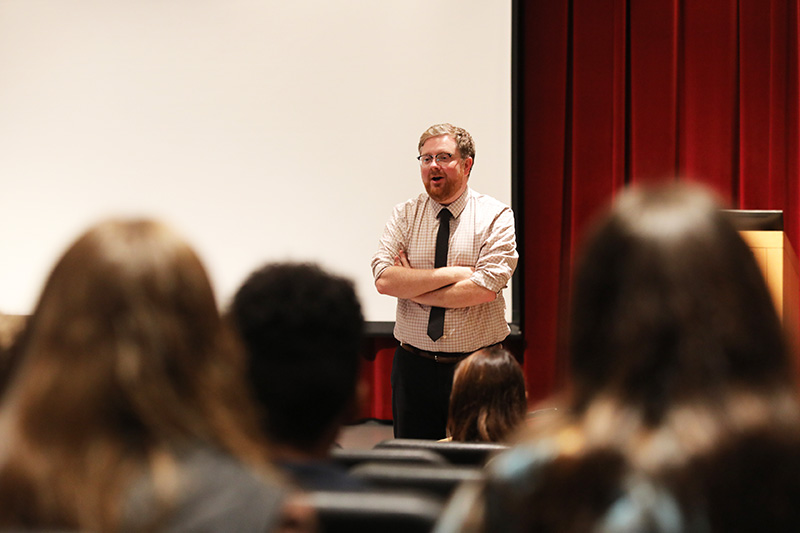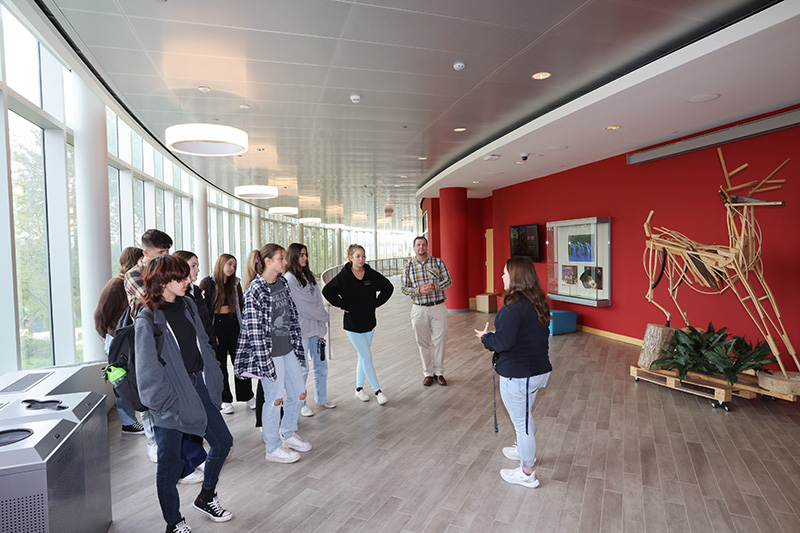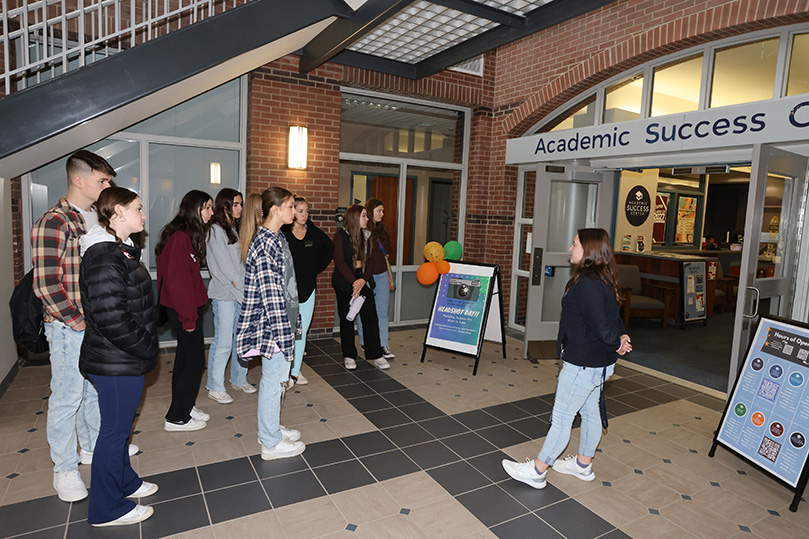- Apply
- Visit
- Request Info
- Give
More high school students earn credits at Eastern with dual enrollment
Written by Lucinda Weiss
Published on October 23, 2023
A growing number of high school students in Connecticut are enrolling in courses that can earn credits at Eastern Connecticut State University under a dual enrollment program that recently received a $3.8 million state grant to school districts.
Students in the dual enrollment program can take courses at their high school that earn credit at participating colleges and universities. Nearly 450 high school students enrolled for Eastern credits this fall, compared with 334 last year and 311 the year before, said Chris Drewry, director of co-curricular academic programming. The students are at 14 high schools, mostly in eastern Connecticut, including E.O. Smith, RHAM and Coventry.
The new state grant from the Connecticut Department of Education, announced in September, will give high schools more resources, such as tuition reimbursements and stipends for teachers who want to teach college-level courses. It is designed to bring more courses into the program. Eastern added two high schools to its dual credit roster this year — Bolton and Newtown. A new STEM partnership will bring Newtown High School students to Eastern during the summer for research as part of their academic year dual credit course.
The dual credit program gives high school students course credit at their high school and college credit if they earn a C grade or better. It is intended to save students money by giving them a head start on college credits and possibly enabling them to graduate from college early. Data show that dual credit courses also have a positive impact on students’ college enrollment and access, according to the state.
Colleges must approve the courses to ensure they meet their standards and align with their curriculum, and the high school teachers involved must submit credentials indicating they have the expertise to teach a college-level course.
Each course credited at Eastern has a faculty liaison who coordinates with the high school, Drewry said. Twenty-four courses are taught, among them classes in art, biology, English, mathematics, physics, astronomy and Spanish.
The new STEM research project with Newtown is a three-year sequence, starting with sophomores, to learn about and conduct science research. The summer after their sophomore or junior year the Newtown students will work at Eastern on research and may have a faculty mentor here. Their research will continue to an advanced level by their senior year.
The STEM program formerly was taught at Newtown in partnership with the State University of New York. Eastern, charging $25 per credit to the high school students, was more affordable, Drewry noted. Twelve Newtown students enrolled in it this fall.
“I am very excited about the program,” said Laura Rodriguez, assistant professor of education who is its faculty liaison. “Research experiences give students rich opportunities to develop competence in science knowledge and practices and to be recognized for that competence,” she said. “This is a powerful way to support a student’s science identity. The sooner we can get students involved in authentic science experiences, the better chance we have to hook them on science for life.”
Some of the dual credit courses offered in high schools are also Advanced Placement classes. Students can choose whether to earn AP credits or college credits. The advantage of the dual credit option is that a student’s college credit is based on an entire year’s work rather than on one AP test at the end of the year, Drewry said.
Credits earned at Eastern are part of a student’s transcript if they enroll at Eastern. If they enroll at another college, that college would determine whether to accept the credits. Most do, Drewry said.
He expects the program to continue to grow. He will be contacting all departments at the University to see which courses they would be willing to offer for dual credit. A department would provide a syllabus that could be used in a dual credit course, and the high schools would determine if it aligns with their curriculum. The high school then would submit the proposed course to the University for review
The new state grant will encourage a big increase in high school participation, Drewry predicted. He is planning to move more of Eastern’s dual enrollment operation online, making it easier for students to enroll and for Eastern to collect tuition. He is also inviting high school counselors to campus to build interest in partnerships with Eastern. Almost all colleges in the state participate in the dual credit program.
The new state grant went to 83 applicants representing 89 school districts. It is funded by one-time federal COVID relief funds.



